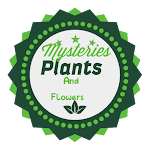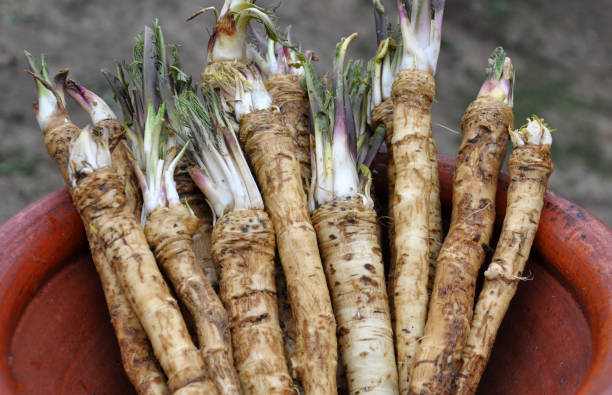The horseradish plant, with its pungent aroma and fiery kick, is more than just a condiment relegated to the back of the fridge. Let's delve into 17 fascinating facts about this root vegetable:
-
Not a True Root: Despite its name, horseradish isn't technically a root but a lateral rootstock. This underground stem grows horizontally and stores energy for the plant.
-
Spicy Surprise: The heat we associate with horseradish doesn't come from capsaicin, like in chili peppers. It's caused by allyl isothiocyanate, a compound released when the horseradish root is broken down or grated.
-
Ancient Antidote: The history of horseradish use stretches back centuries. Ancient Egyptians used it as a medicinal plant, believing it could treat everything from coughs to toothaches.
-
Medieval Medicine Cabinet: In the Middle Ages, horseradish was valued for its supposed ability to clear sinuses and fight infections. It was even used as a poultice for wounds.
-
A Clear Conscience: Horseradish was once believed to be a powerful aphrodisiac. However, modern science hasn't found any evidence to support this claim.
-
Cleopatra's Companion? Some historical accounts suggest horseradish might have been used as a condiment in ancient Egypt, potentially even enjoyed by Cleopatra.
-
A European Export: Horseradish likely originated in the Mediterranean region and was brought to Europe by Romans around the first century AD.
-
Not Just for Roasts: While commonly served with roasted meats, horseradish can be enjoyed in various ways. It can be added to sauces, dips, dressings, and even used to create a spicy cocktail known as a Bloody Mary.
-
Pest Repellent Power: The strong scent of horseradish can deter some pests from your garden. Planting it near other vegetables may help keep unwanted critters at bay.
-
Natural Decongestant: The pungent fumes released by horseradish may help clear congestion and provide some relief from coughs and colds.
-
Anti-inflammatory Potential: Studies suggest horseradish might have anti-inflammatory properties. This could be beneficial for conditions like arthritis and muscle pain.
-
Kidney Cleanse Myth: While horseradish is sometimes touted as a natural kidney cleanse, there's no scientific evidence to support this claim.
-
A Friend to the Gut: Horseradish contains prebiotics, which are beneficial fibers that support gut health and digestion.
-
Not for Everyone: The strong flavor and heat of horseradish can be irritating to some people, especially those with sensitive stomachs or digestive issues.
-
A Sign of Spring: Horseradish leaves, while not commonly eaten, can be a welcome sign of spring. They emerge before the flower stalks and have a mild, peppery flavor.
-
Flower Power: Horseradish produces small white flowers in clusters. These flowers are edible and can be added to salads for a peppery bite.
-
Low in Calories: Horseradish is a great condiment choice for those watching their weight. It's incredibly low in calories, adding a burst of flavor without a significant calorie contribution.
So, the next time you reach for the horseradish, remember it's not just a fiery condiment but a plant with a rich history, potential health benefits, and some surprising uses!






